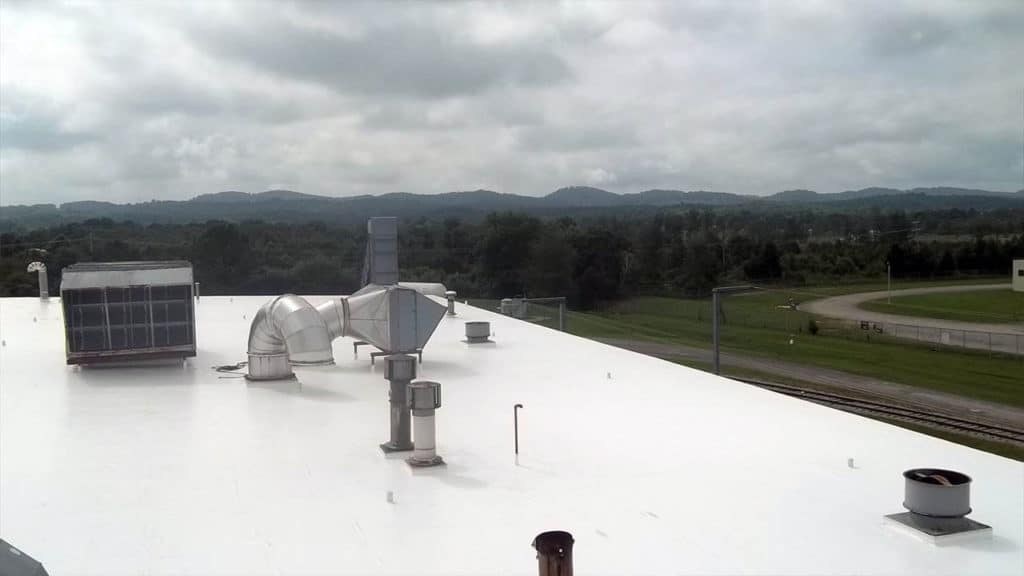Commercial flat roofing systems are the most common option across the USA. A flat roof is cost-effective, energy-efficient, and promises more space for your business. Also, flat roofs give you more space for installing other relevant machines for your business.
Commercial flat roofs don’t care much about aesthetics, but they are popular for commercial buildings due to their functionality. They are different from classic sloped roofs but with unique features.
However, like any other option, your flat roofing system will not luck issues. And so today, we will be looking at the most common flat roof problems. We aim to address them as soon as they come so that you don’t have to replace the entire roofing system.

Poor Installation
Let’s begin with the most common commercial flat roof issue we have seen in San Antonio. Understand that your commercial property’s flat roof carries more weight than you think. And that is why you can never overestimate the importance of quality installation.
When commercial flat roofs are not installed properly, you are bound to meet all or most of the problems we will be mentioning here. Unfortunately, some property owners assume that flat roofing systems are easy to install and will hire just anyone. That may cost you a lot, even before routine maintenance starts.
For instance, if the area is not cleaned, drained, and primed well, it can lead to improper adhesion on BUR roofs. You should not be shocked to see your roof falling off after a short time.
Hiring unqualified teams means a poor installation job and more expenses on commercial roofs. Let experienced experts like Bison Roofing work on your property. Your roof will be installed properly, and you will get regular maintenance services at affordable prices.
Flat Commercial Roofing Water Pooling
Pooling water issues are one reason a commercial property owner will prefer low-sloped roofing systems. Such roofs leverage gravity, allowing water to flow naturally into gutters. A flat, commercial roof does not have such benefits.
Accumulation of water is a big issue when the drainage system needs to be properly done. You will be dealing with severe roof damage unless you get a reputable roofing contractor. Most flat roofs use barely noticeable slopes to allow for easier water flow. No wonder they are also called low-sloped roofs.
Regular roofing maintenance is necessary, even if you don’t have a pooling issue. Leaving problems unresolved risks roof leaks and similar issues that could lead to larger repair expenses. Proper drainage systems must be installed on a new roof to avoid standing water.
As mentioned earlier, most flat roofs use a slight slope. The roofs can still hold HVAC units and other machines, but they have the added advantage of letting off water easily.
Debris
Flat roofs may collect water if the drainage is not good. But that is not the only issue to worry about. Flat roofs collect large amounts of debris, which has become one of the major issues for property managers.
Longer periods of debris collection, even in smaller amounts, can block the drainage system. Standing water will freeze during winter, putting more pressure on your roof with a possibility of serious damage.
To avoid ponding water and debris, these roofs must be checked constantly, and proper action must be taken. If you think your roof is poorly installed, you can have experts check and recommend the best solutions.
Damage from Extreme UV Exposure
Flat roofs are easily accessible to employees and everyone using the building, which is a huge advantage. However, “alligatoring” is one of the significant issues you will have to deal with. Constant exposure to harsh sun rays may damage even the most resilient roofing membrane. Exposed layers may hold it off for some time, but only for a short time.
The exposed part can crack and bubble, looking like alligator skin. This could affect the roof coating and reduce your roof’s life span. You may ignore it if the bubbles are too small. But when they become obvious, it would be beneficial to find help.

Internal Thermal Movement
Some flat roof materials are considered energy efficient, which makes them cost-effective in the long run. However, extreme thermal movement in these roofs causes them to expand from extreme fluctuations in temperature. Eventually, your roof will crack under pressure, leading to leakages.
The best way to handle this issue and avoid premature failure is by having an expert evaluate it. They will identify common problem areas and suggest the best solutions to avoid significant system failures. Always consider this when hiring a roofing company for your commercial property.
Buckling
Many people don’t know this, but buildings tend to shift before settling. This will include the roof area, where the roofing membrane may expand, changing its structure. Since the membrane is large and relatively inflexible, such changes could lead to permanent buckling.
The roof weakens in certain areas, reducing its service life. You may need to replace the entire roof if the damage is extensive. In most cases, this problem is tied to improperly done flashing details, which is another reason you need a professional installer.
Conclusion
Flat roofs are, without a doubt, the best option for commercial buildings. However, you must prepare for ponding water and other issues mentioned above. The extent of the problem will depend on the type of roofing material you choose and how the installation is done.
You can easily avoid some of these problems by hiring an expert installer. The company must be experienced in dealing with such problems and hence, will use approaches that bypass them. It’s better to spend more on the initial inspection than deal with expensive repairs later. Call Bison Roofing for a free quote best roofing offers.
